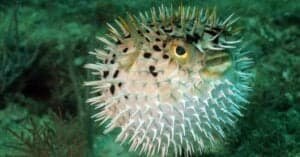Pufferfish are among the most interesting of all the fish in our oceans. One of the most incredible pufferfish facts is that, while their meat can be deadly, many people still choose to eat them. These fish only live in certain parts of the ocean and make themselves incredibly difficult to eat.
Here, we’ll find out just what makes pufferfish so fascinating. Read on to learn 10 incredible pufferfish facts!
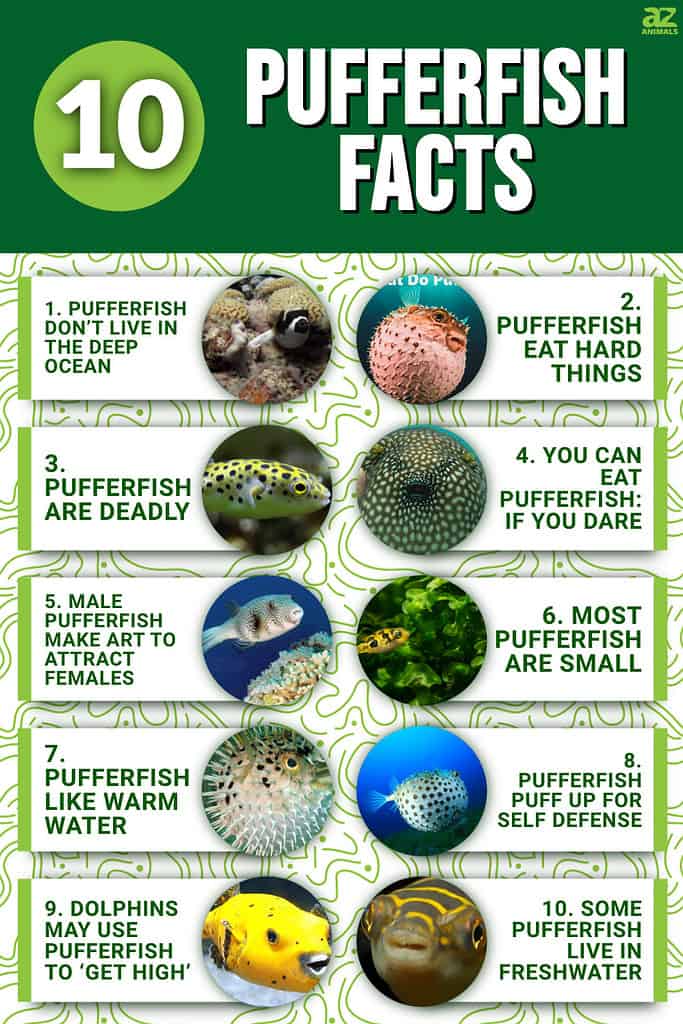
1. Pufferfish Don’t Live in the Deep Ocean

Pufferfish live close to shore and are only found in warm, tropical waters.
©Nina Milton/Shutterstock.com
Pufferfish is the common name given to the nearly 200 species of puffers in the Tetraodontidae family. Members of this family occur primarily in warm, tropical waters close to the equator. They’re found in the shallow coastal waters of Central America, northern South America, Africa, the Indian subcontinent, Southeast Asia, Indonesia, and northern Australia. They occasionally live further north or south in temperate waters but not in cold, polar waters.
2. Pufferfish Eat Hard Things

Each species of puffer has a slightly different diet. One incredible pufferfish fact is that pufferfish may eat everything from algae to mollusks. Puffers are omnivorous, which means they eat both meat and vegetable materials. They have beak-like mouths and teeth, which they use to consume mussels, clams, and other mollusks. They use their bony teeth to crush apart prey.
3. Pufferfish are Deadly
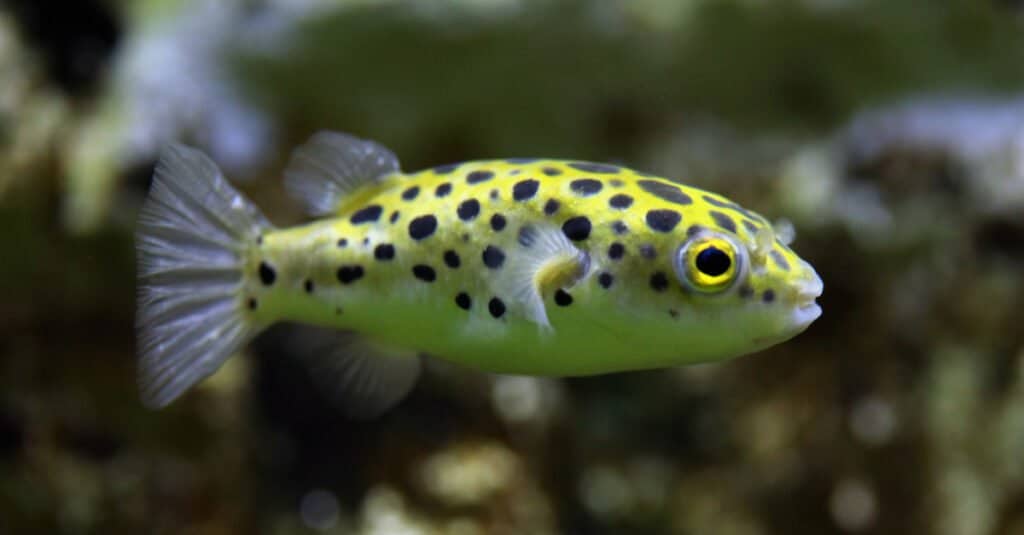
Puffers come equipped with multiple methods of self-defense.
©Vladimir Wrangel/Shutterstock.com
Puffers are slow, awkward-looking fish that, at first glance, seem like perfect targets for predatory fish. But, if you’re thinking about eating a puffer, you better think twice. The pufferfish’s most famous line of defense is their ability to ‘puff up’. To do this, they actually fill their bellies with water. That way, if something tries to eat them, it runs the risk of choking to death. And that’s not even half of the pufferfish’s self-defense capabilities.
4. You Can Eat Pufferfish: If You Dare
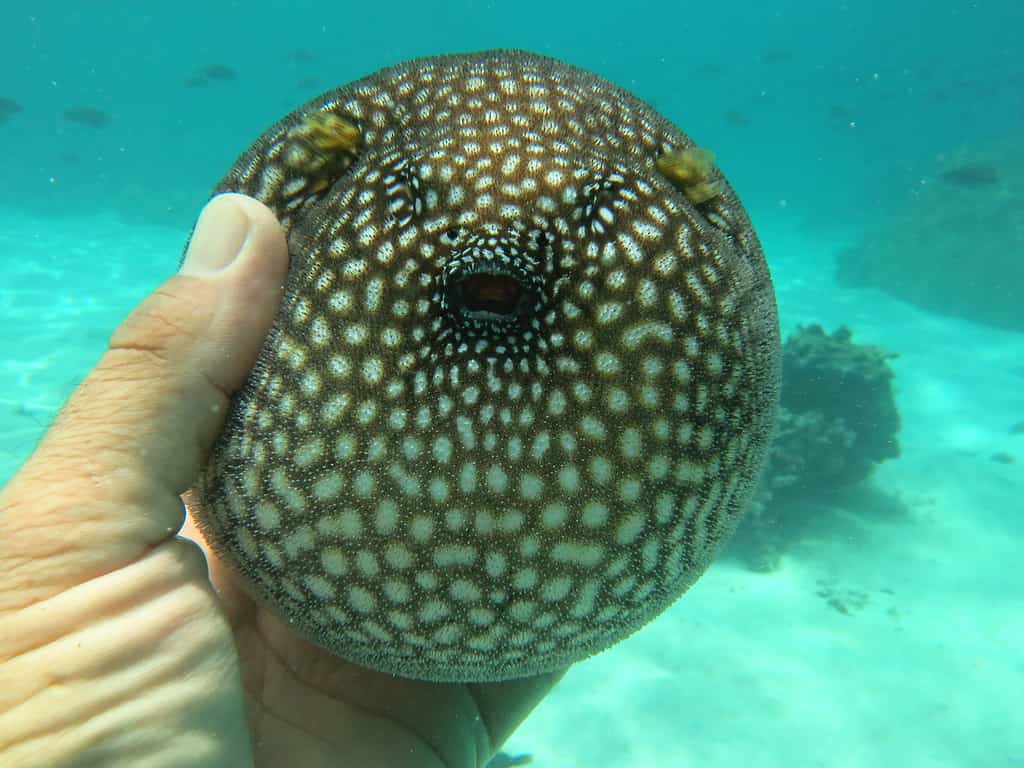
Not only do pufferfish inflate, but deadly toxins are present in their skin, ovaries, livers, and intestines.
©Moize nicolas/Shutterstock.com
One of the most incredible pufferfish facts is that pufferfish don’t just puff up; they’re also incredibly poisonous. Almost all species of puffer contain both tetrodotoxin and neurotoxin. These toxins—found in their skin, ovaries, livers, and intestines—keep them safe from most predators, including humans. However, certain fish, like sharks and lizardfish, can safely eat pufferfish. Humans too enjoy the occasionally prepared puffer, known as fugu in Japan. However, only highly trained chefs know how to prepare the meat safely.
5. Male Pufferfish Make Art to Attract Females

The white-spotted pufferfish is a native species of Japan.
©Albert kok / CC BY-SA 3.0 – License
Male white-spotted pufferfish, which live off the coast of Japan, employ a very curious behavior to attract mates. They begin by selecting a suitable place in the sand. Then, propelling their bodies through the sand in purposeful, planned directions, they create intricate, geometric patterns. These nests resemble crop circles or Buddhist mandala paintings. But, they’re created by no other than the tiny white-spotted pufferfish.
6. Most Pufferfish are Small
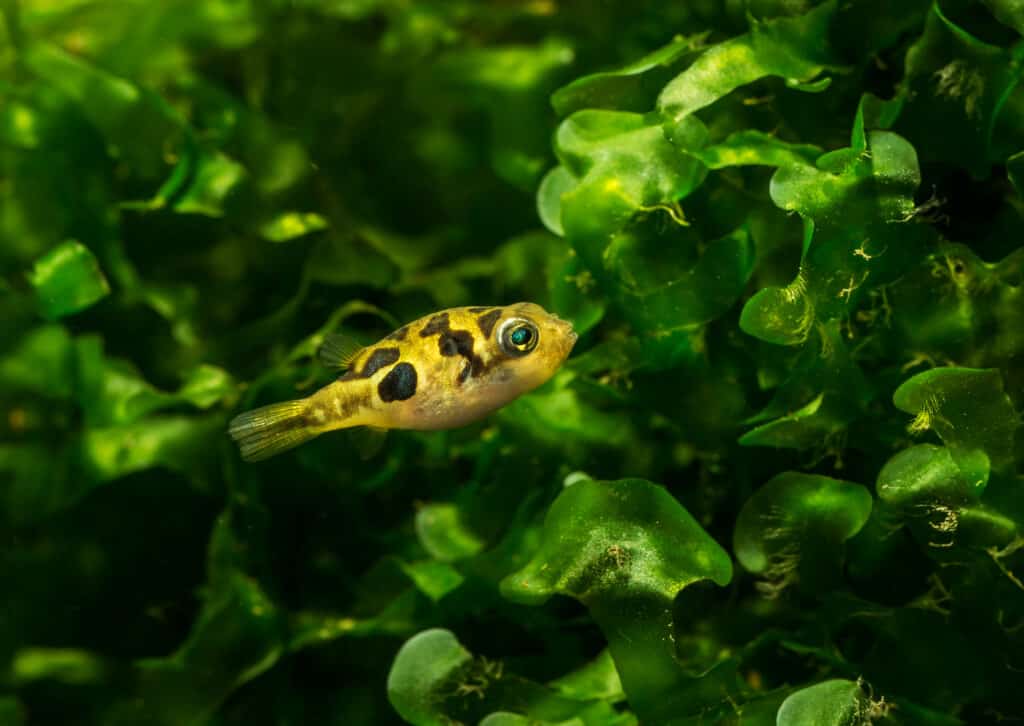
Most pufferfish measure less than 15 inches long. This male pea puffer is an example of a smaller sub-species.
©Toxotes Hun-Gabor Horvath/Shutterstock.com
In general, pufferfish tend towards the small side. Most measure less than 15 inches long, with a few reaching up to 26 inches long. The smallest puffer is the Malabar pufferfish, which reaches only 1.5 inches long in adulthood. These fish live in the waters of southwestern India. The largest puffer in the world is the giant freshwater pufferfish, which can grow up to 26 inches long. These puffers live in only a few of the rivers in Africa.
7. Pufferfish Like Warm Water
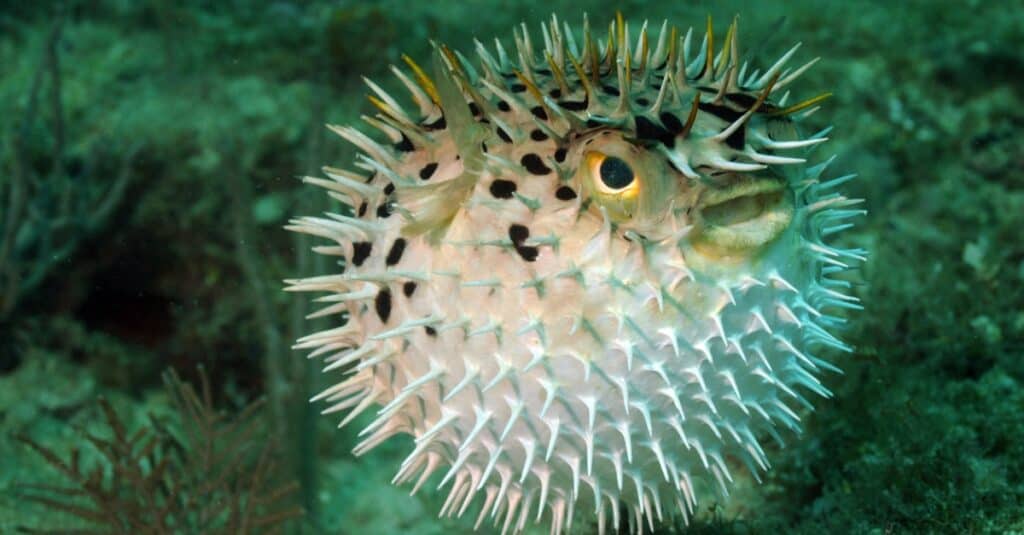
You won’t find any species of pufferfish in the cold waters of the polar regions.
©iStock.com/FtLaudGirl
Unlike big sharks, like great whites and tiger sharks, or whales, like blue whales and orcas, pufferfish spend their lives close to shore. They’re common in coastal waters, particularly around reefs and sand bars. If you spend any time diving or snorkeling in shallow tropical waters, you’re likely to encounter at least one of these highly defensible fish. Just don’t try to touch them, and never try to eat one.
8. Pufferfish Puff Up for Self Defense
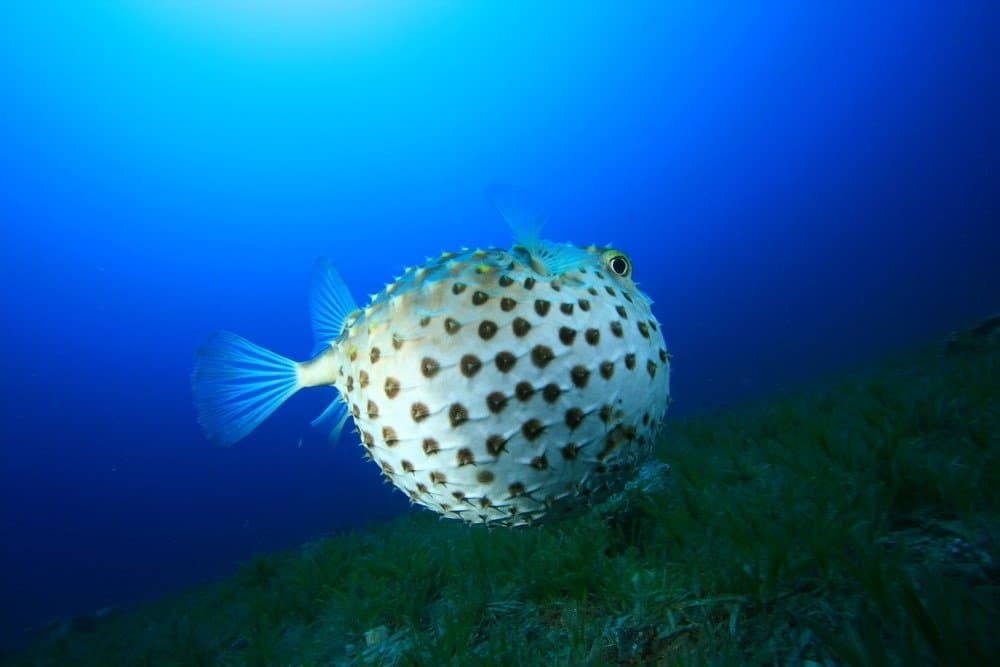
A yellow-spotted pufferfish has puffed up to defend itself by filling its stomach with water.
©Rich Carey/Shutterstock.com
One of the most incredible pufferfish facts is that puffers are poisonous but also pose a choking hazard. Like the closely related porcupine fish, many have spiny bodies designed to catch in the throats of would-be predators. When threatened, they fill their stomachs (which have evolved to expand to many times their normal size) with water. If they happen to be above water, they can also expand using air. And as if puffing up wasn’t enough, they also possess deadly poisonous bodies.
9. Dolphins May Use Pufferfish to ‘Get High’

Dolphins partake in perception-altering substances.
©Tatiana Belova/Shutterstock.com
Another incredible pufferfish fact has to do with another puffer line of defense. When threatened, puffers also emit chemical deterrents into the water. These foul-smelling liquids are meant to scare predators off. But, for some dolphins, the effect seems to be the opposite. Dolphins have been observed seemingly purposely inhaling these liquids. Immediately after inhalation, they seem to act a little funky, leading some to believe that the dolphins are actually ”getting high” off pufferfish supply.
10. Some Pufferfish Live in Freshwater

The figure eight pufferfish is one example of a pufferfish that lives in freshwater.
©Dan Olsen/Shutterstock.com
That’s right: not all pufferfish live in salt water. In fact, many species make their homes in freshwater rivers. Among them is the Mbu pufferfish, also known as the giant freshwater pufferfish. These fish live in the Congo and Malagarasi Rivers of Africa, as well as in Lake Tanganyika. Another freshwater species of puffer, the Fahaka pufferfish, actually lives in the Nile River. Freshwater pufferfish make popular additions to freshwater fish tanks. Some popular species are dwarf pea puffers, imitator puffers, redeye puffers, crested puffers, fang’s puffers, and emerald puffers.
The photo featured at the top of this post is © Rich Carey/Shutterstock.com
Thank you for reading! Have some feedback for us? Contact the AZ Animals editorial team.




